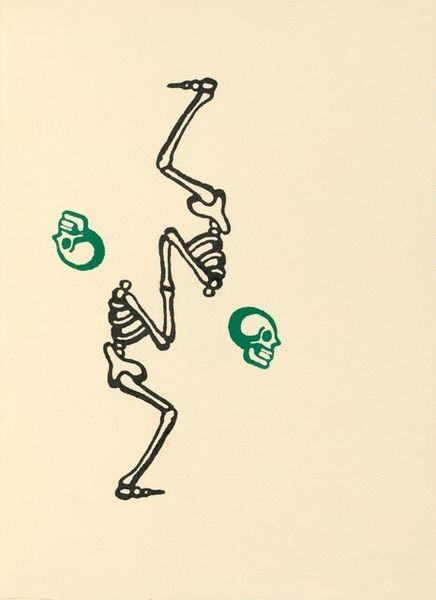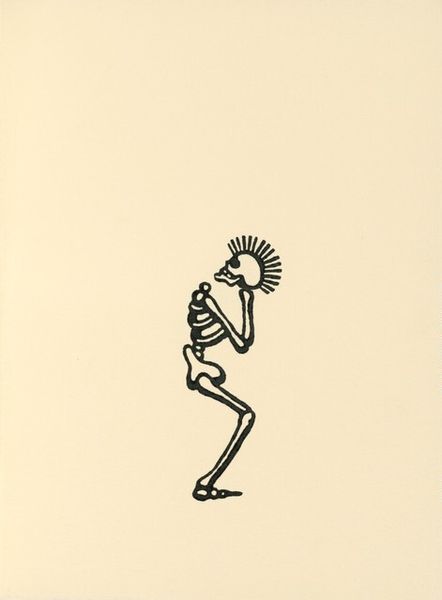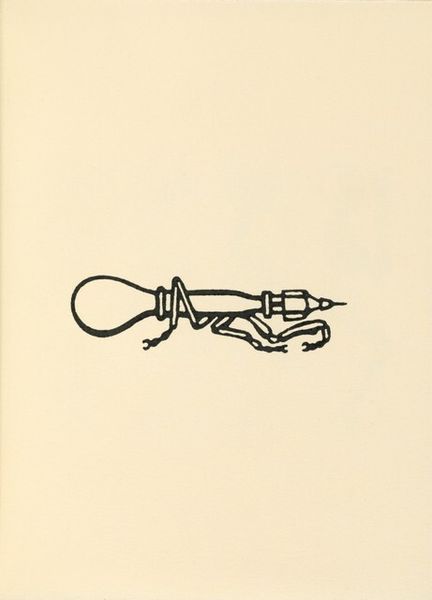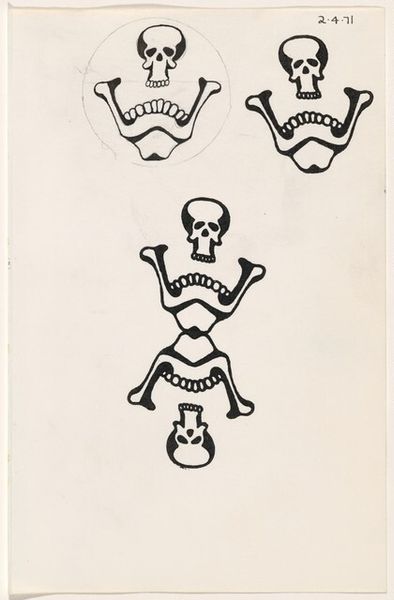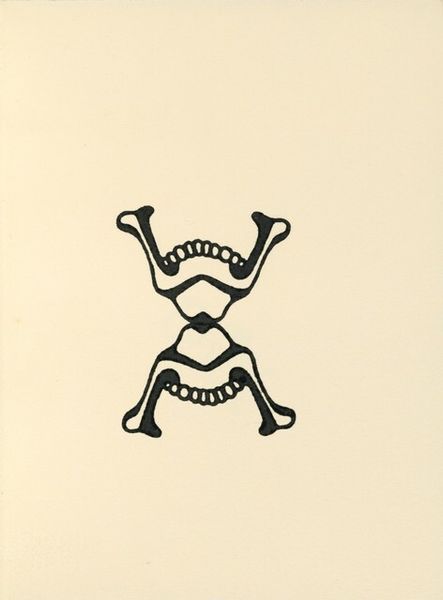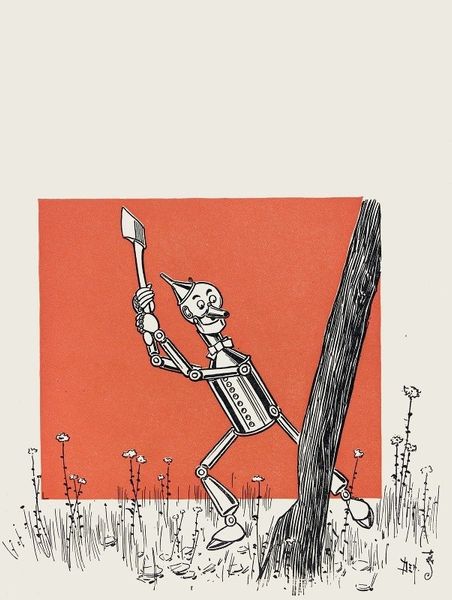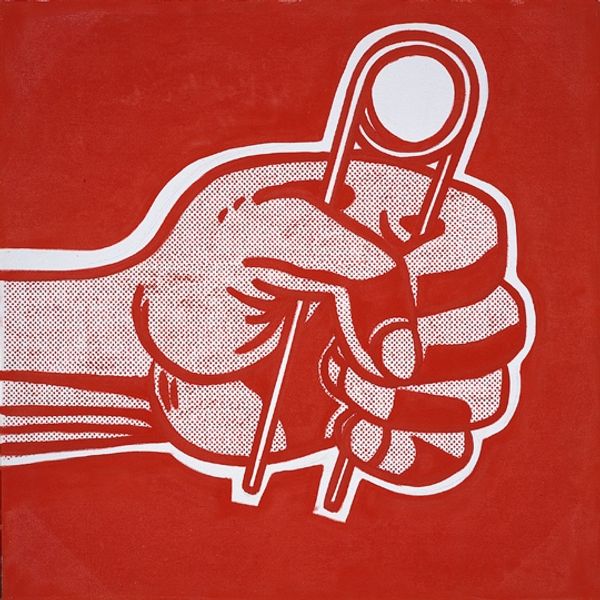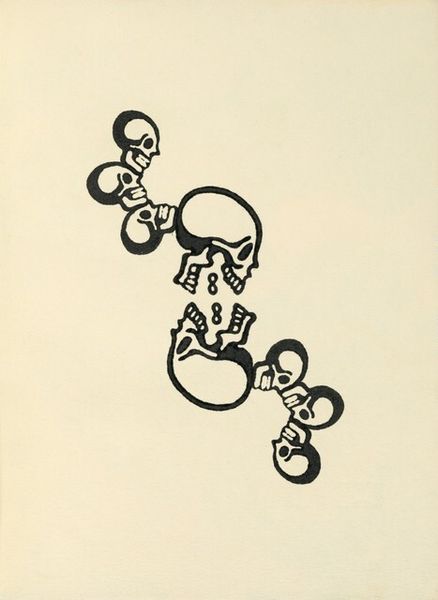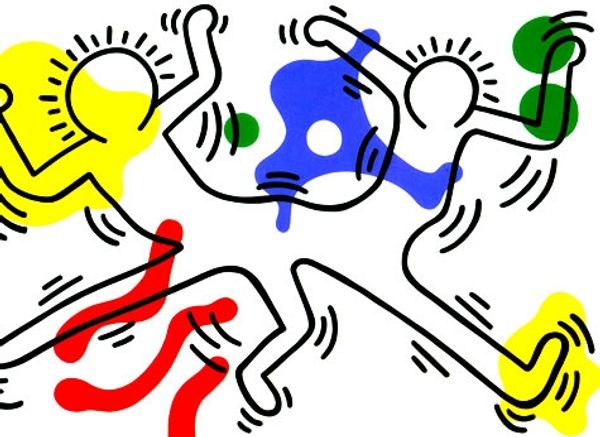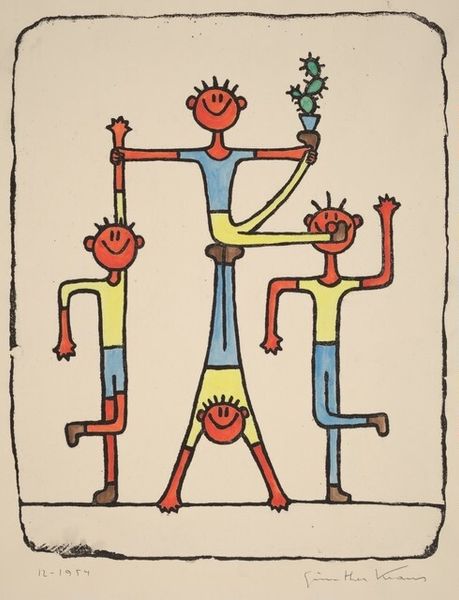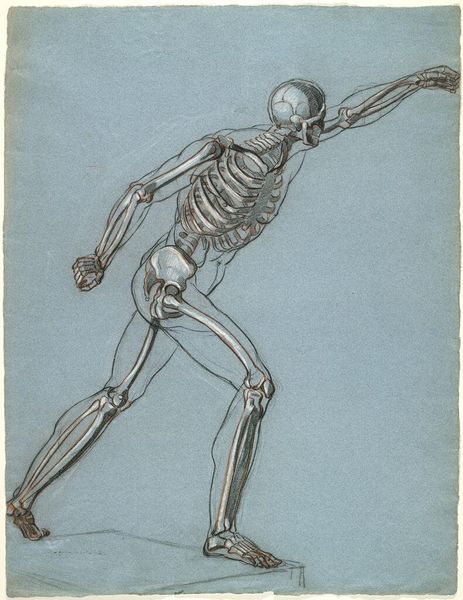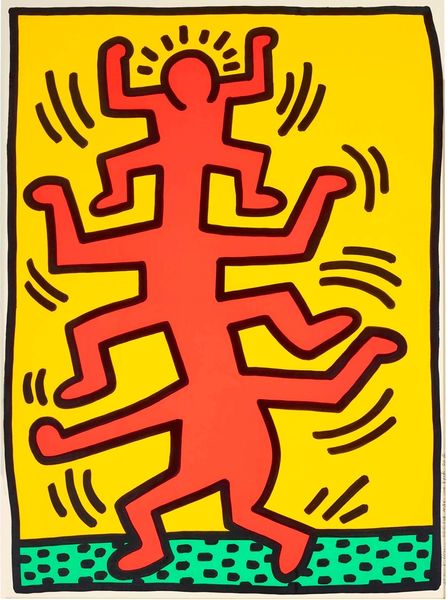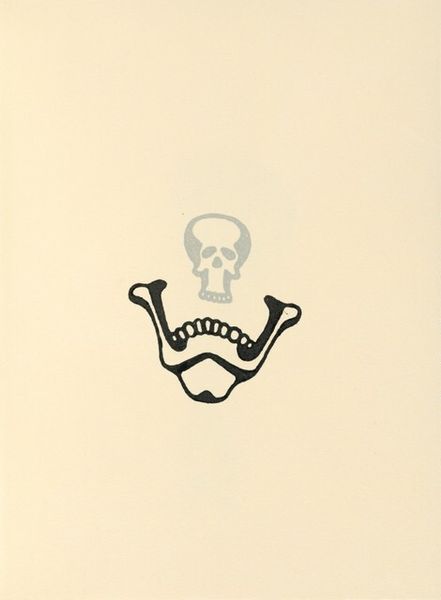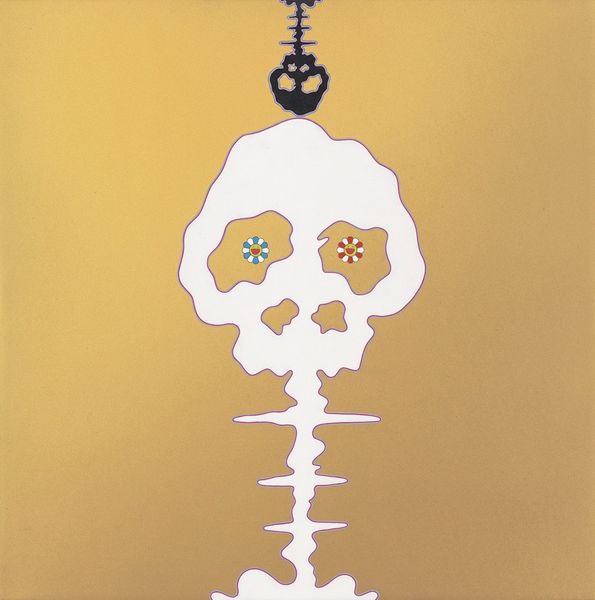![Untitled ["tattoo" book] by James McCracken Jr.](/_next/image?url=https%3A%2F%2Fd2w8kbdekdi1gv.cloudfront.net%2FeyJidWNrZXQiOiAiYXJ0ZXJhLWltYWdlcy1idWNrZXQiLCAia2V5IjogImFydHdvcmtzLzliNWRlODQ0LTdhODYtNDRhNy04YmM1LTMwM2Q2MmJjNzE1NS85YjVkZTg0NC03YTg2LTQ0YTctOGJjNS0zMDNkNjJiYzcxNTVfZnVsbC5qcGciLCAiZWRpdHMiOiB7InJlc2l6ZSI6IHsid2lkdGgiOiAxOTIwLCAiaGVpZ2h0IjogMTkyMCwgImZpdCI6ICJpbnNpZGUifX19&w=1080&q=75)
drawing, ink
#
drawing
#
old engraving style
#
hand drawn type
#
hand lettering
#
figuration
#
ink line art
#
ink
#
hand-drawn typeface
#
ink drawing experimentation
#
pen-ink sketch
#
line
#
pen work
#
sketchbook drawing
#
doodle art
Dimensions: overall (closed): 17.1 × 13 × 1.5 cm (6 3/4 × 5 1/8 × 9/16 in.) sheet (each approx.): 16.4 × 12.6 cm (6 7/16 × 4 15/16 in.)
Copyright: National Gallery of Art: CC0 1.0
Editor: This piece is called "Untitled ['tattoo' book]," made with ink and drawing by James McCracken Jr. in 1971. The stark imagery is incredibly striking! These skeletons holding flames evoke a real sense of ritual to me, almost like they’re part of some ancient order. What symbolism jumps out to you? Curator: The skeleton itself, across cultures, carries a powerful weight, doesn’t it? From the medieval "memento mori" reminding us of our mortality, to the Day of the Dead celebrations honoring ancestors, the skeleton bridges the living and the departed. Here, the addition of fire introduces another layer. Fire can represent destruction, purification, passion…which of those resonate most here, do you think? Editor: Purification, definitely. Or maybe transformation? It feels less about burning away and more about some sort of alchemical change. It makes me wonder, what would an audience in the 70's make of this imagery? Curator: Precisely. Remember, in the late 60s and early 70s, counter-culture movements were deeply interested in spirituality, Eastern religions, and even the occult. Tattoo art experienced a huge resurgence at this time. Think about the imagery you'd see associated with bikers or rock bands – very strong images! Did the artist adopt this language to probe into hidden knowledge or rebellion? The repeated motif gives the composition almost a feel of liturgical chant. Editor: That’s a good point – the repetition does give it a rhythm, making the tattoo feel almost…meditative? The ritual feel becomes so much clearer thinking about it like that. Curator: Exactly! The stark black and red add to the punch, while simultaneously linking back to a very old engraving or woodcut aesthetic, calling back to earlier forms of symbolic language. Each skeleton could tell a unique story about change, resilience, and hidden beliefs. It really expands what "tattoo" means here, doesn’t it? Editor: Absolutely! I came in thinking it was just about decoration, but it seems to be a potent reflection of that time.
Comments
No comments
Be the first to comment and join the conversation on the ultimate creative platform.
